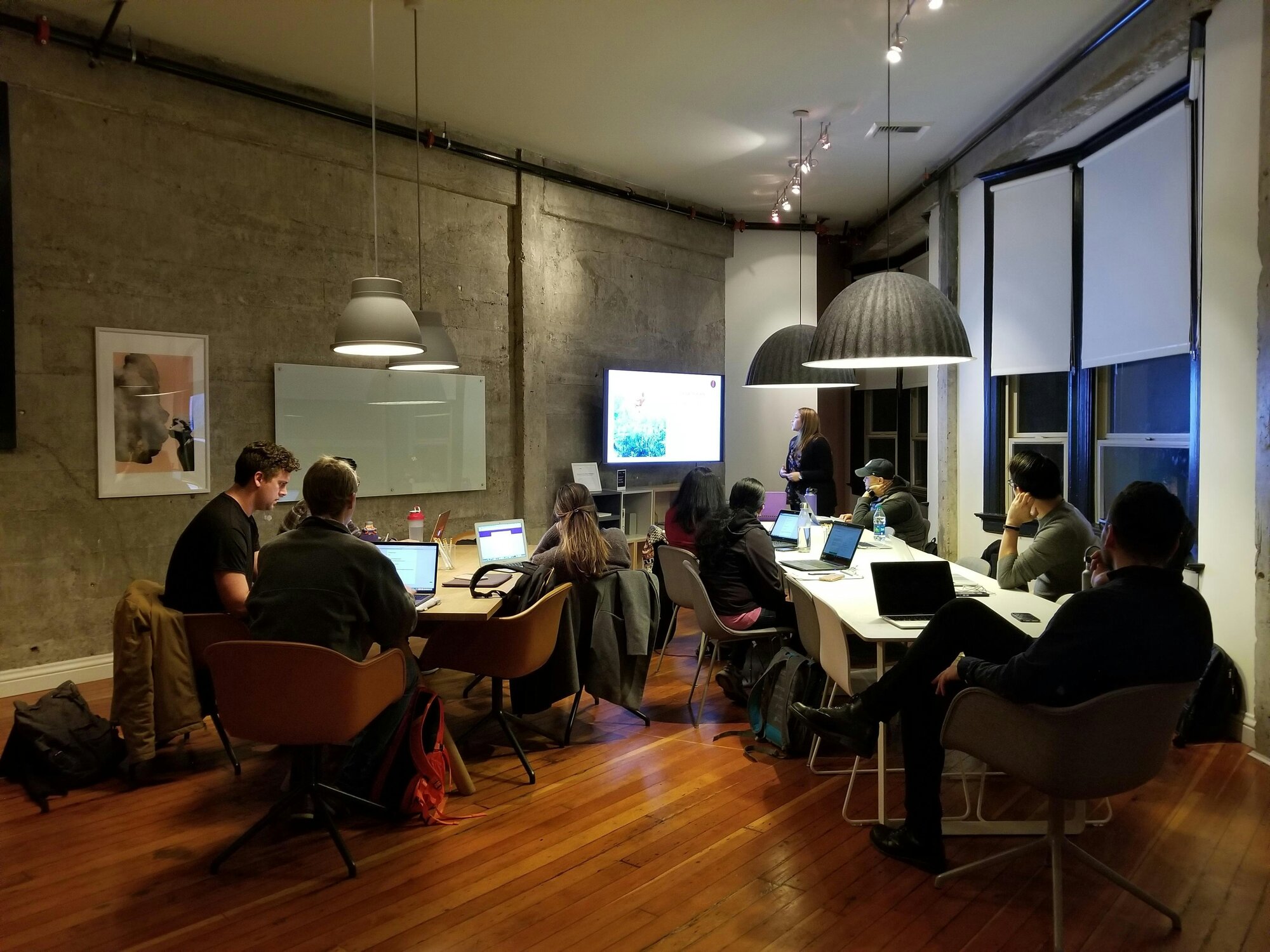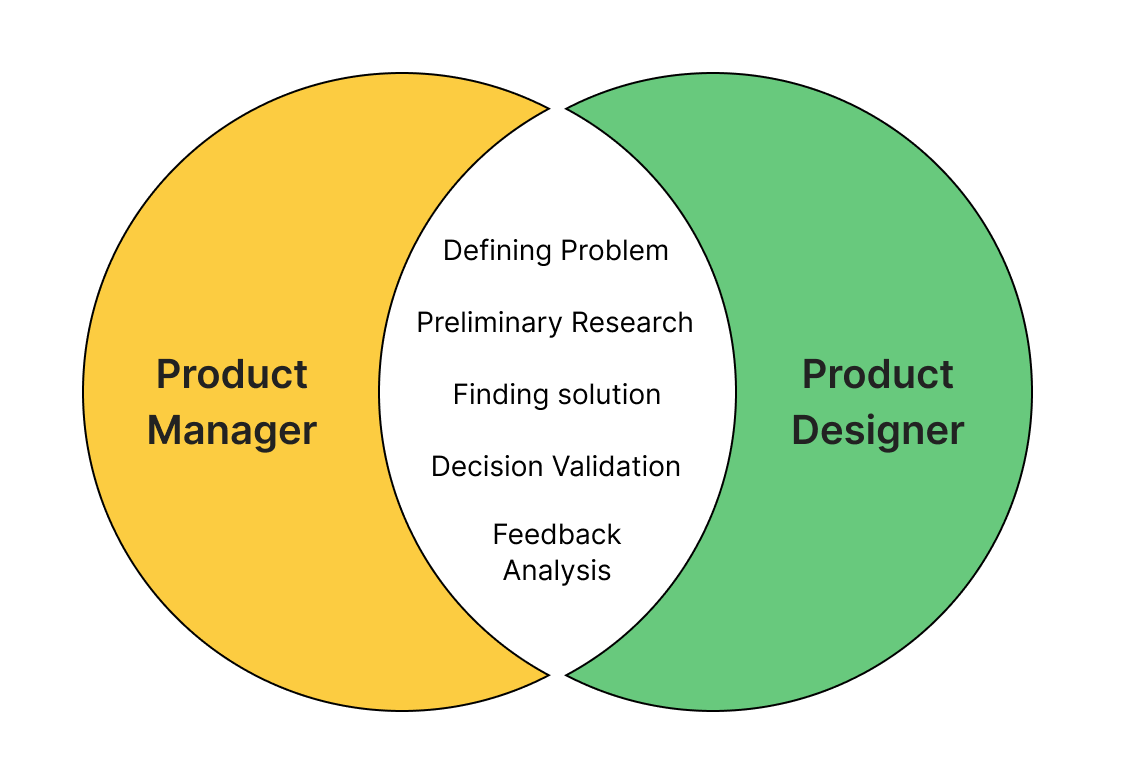Let me start with a story. In a busy tech office, Alex, a product manager, excitedly told Jamie, the developer, about the new "Celebration with confetti" idea. Alex explained, "When users achieve success, their screens will show falling confetti!" Jamie, always ready for new challenges, agreed immediately to try to build it. But when Jamie finished and demo-ed it, there was too much confetti, and the system slowed down. Then Alex said, "Maybe we should've used less confetti!" Though Jamie smiled and kept up the good humor, this bothered him immensely. Both of them realized that working together is important for successful outcomes.
Framework to collaborate better
While the story is fictional, it reflects the often-occurring real-world dynamics between developers and product managers. Collaboration between developers and product managers is essential for product development, yet communication gaps are frequent. Fostering a collaborative relationship relies on embracing four principles for developers, and for product managers. Let me elaborate with a P2C2 framework.
Proximity
Developers value when their product manager has a keen understanding of technical boundaries and constraints they work within. Technology projects, regardless how innovative, operate within a framework defined by the technology in use, infrastructure, and third-party tools or plugins integrated into the system. Often, it is not about what is possible hypothetically; but it is also about what is feasible and can be done with reasonable trade-offs. When a product manager proposes an addition of new features or enhancements, it becomes crucial for them to be aware of these technical limitations. This awareness enables product managers to set goals that are ambitious, yet achievable, leading to more successful outcomes.
For instance, imagine a scenario where a product manager is excited about introducing a real-time chat feature on a website. While the idea is promising, the developer might be aware that the current backend infrastructure isn't designed to support such instantaneous interactions. In such cases, the collaboration between the developer and the product manager becomes pivotal. They might explore alternative solutions, such as integrating a third-party chat tool or strategizing a backend overhaul to accommodate the desired feature in the future. This collaboration and open dialogue between product managers and developers are not merely about problem-solving; they are about fostering a culture of understanding and mutual respect. It is about acknowledging that while developers bring technical expertise to the table, product managers offer valuable insights into user needs and market trends. Bridging these perspectives can lead to more innovative solutions and a product that truly resonates with users.
Prioritization
In any project, some tasks are super important, and some can wait. Developers appreciate when product managers prioritize tasks with a clear list, acting as a roadmap for the project. However, unexpected ideas, like adding a chat feature, can arise. While this idea might sound cool and helpful, it wasn't part of the original plan. Adding new things can make the project longer and more complicated. So, the product manager and the developers need to discuss and have an alignment rather than the product manager dictating tasks. They should discuss if this new idea is a good fit for the project. If they decide it is, they will have to rethink their plan and the timeline. If all are in agreement, they may need to adjust the plan or timeline, ensuring the project's success and staying on track.
Clarity
Imagine, an online store wants to let shoppers change products before buying. At first, the product manager might tell the developer, "Let customers customize products and try them before making a purchase." That is pretty vague. The developer might just let shoppers pick colours. But if the product manager shows pictures of what they want, like choosing colours, adding logos, or seeing a 3D preview, then the developer knows exactly what to do. It is also helpful when they say things like, "Customers should see a live preview of their design." Building something new always has questions. The developer might ask things like, "Can customers make the logo bigger?" This is when the product manager and developer need to have frequent discussions and converge decision making having clear mechanisms for tie-breakers. By discussing regularly and getting feedback, they work together to make the tool right for shoppers and fit the company's goals.
Celebrate each other
Developers often work in the backend and product manager becomes the face of a product. They handle the technical parts, making sure everything runs smoothly. On the other hand, the product manager, is like the spokesperson for the product. They talk about it, present it, and show it off to the world. Sometimes, this setup works great, and both the developers and product managers shine when the product does well. But if something goes wrong with the product, it can put pressure on both sides. There's a saying that when you share good times, they feel even better, and when you share tough times, they feel a bit easier to handle. This idea holds true for developers and product managers working together. Sure, they have their tasks and plans to follow. But what really makes them work well as a team is something deeper: respect for each other's roles and hard work. Developers put a lot of effort into making things work, and they appreciate when someone notices their hard work. On the other side, product managers value the technical expertise developers bring to their ideas. When they both understand and respect each other's roles, they create a positive atmosphere. In such a setting, new ideas pop up easily, teamwork flows naturally, and together they can create outstanding products that people love.
How to actually collaborate better
We often say about how product managers and developers should work closely. But saying isn't enough; they need to work together actively to succeed. Creating a great product involves thorough planning, frequent communication, and a clear understanding of each other's ideas. The process of refining new product or feature ideas often requires discussions, prototype testing, and constructive feedback, even for experienced professionals.
Distilling product managers collaborations across sales, marketing, and other stakeholders – developers often look to understand how the different functions in the organization work to bring a product to the market. In doing this the developer, looks to understand the overall product lifecycle and product managers are the best conduit between the developers and the rest of the product lifecycle flow. Be it the UX team, marketing, sales, and even executive leadership. The best way to stream in the knowledge acquired from these groups is to create an ongoing touchpoint with the developer groups. This can be distilled in the form of a monthly business report, voice of the organization deck, or a meeting to disseminate this information. This squarely should be for developer consumption. This will bring a lot of synergy into the relationship between developer and product manager.
Here are four mantras to work well together:
Write it down: Product managers should write down their ideas clearly. They should mention what is needed for the first version of the product, known as the MVP. This helps developers know what to focus on.
Try it out: Developers like to try things hands-on. They should make a prototype – simple version or model of the product, so everyone can see and understand the idea better.
Keep talking: They should have regular meetings to share thoughts, feedback, and any issues they face. This helps everyone stay on the same page and solve problems together.
Use Agile: They can use the Agile methodology. In this approach, product managers keep updating their plan, and developers keep improving the product based on feedback. It's flexible and helps them adjust to changes quickly. They can decide how often to meet and what to work on first based on the project's needs.
In product development, two key players are product managers and the developers. They are like teammates on a soccer field; they each have their roles, but they need to work together to score a goal (which often literally product managers and devs are working to achieve in a corporate setting as well – accomplishing goals). Developers are like the players who know all the moves and techniques. But just like a soccer player needs a coach's plan, developers need guidance from product managers. That is where product managers come in. They provide a clear vision for the product, offering instructions and goals to guide developers. By giving clear instructions and goals, product managers help developers know what to do. However, product development is an ongoing journey. Along the way, there might be some shortcuts or quick fixes. Developers, being the experts, notice these things. When they share this with product managers, they can work together to decide the best way forward.
In the end, the success of a product depends on how well product managers and developers work together. When they communicate, share ideas, and respect each other's roles, they can create something amazing that people will love. Like a winning soccer team, their teamwork and understanding make all the difference.
Explore more product management content on Mind the Product by visiting our Content A-Z.









